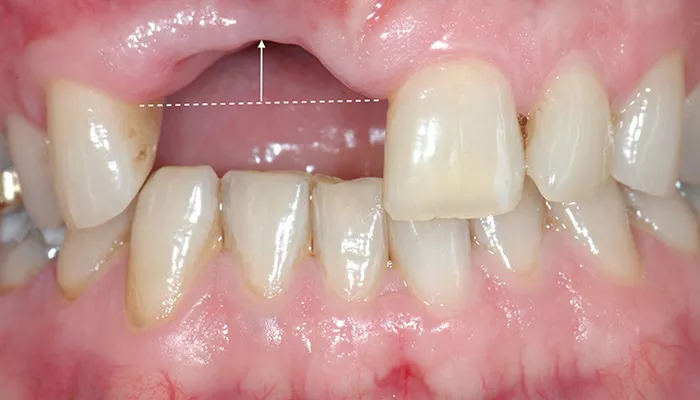Periodontal disease, commonly known as gum disease, is a progressive condition that affects the supporting structures of the teeth. If left untreated, it can lead to significant oral health issues, including tooth loss. This article aims to provide a comprehensive overview of how long periodontal disease can cause tooth loss, detailing the stages of the disease and the factors influencing its progression.
The Stages of Periodontal Disease
Periodontal disease progresses through several stages, each with distinct characteristics and implications for oral health.
Understanding these stages is crucial for recognizing the potential timeline for tooth loss.
1. Gingivitis (Early Stage)
Gingivitis is the initial stage of periodontal disease. It is characterized by inflammation of the gums caused by plaque buildup. Symptoms include:
- Red, swollen gums
- Bleeding during brushing or flossing
- Bad breath
At this stage, if proper oral hygiene is practiced, gingivitis can be reversed within a few weeks. However, if left untreated, it can progress to periodontitis within two to three weeks.
2. Periodontitis (Moderate Stage)
If gingivitis is not addressed, it can advance to periodontitis. This stage involves deeper infection where plaque extends below the gum line.
Symptoms include:
- Increased gum bleeding
- Persistent bad breath
- Formation of pockets between teeth and gums
Without treatment, periodontitis can develop into moderate periodontitis in approximately 12 to 16 months. At this point, damage to the bone supporting the teeth begins, leading to potential tooth mobility.
3. Advanced Periodontitis (Severe Stage)
Advanced periodontitis represents the most severe form of periodontal disease. The symptoms become more pronounced and include:
- Severe gum recession
- Loose teeth
- Pus discharge from gums
- Painful chewing
In this stage, significant bone loss occurs, which can lead to tooth loss within months if no intervention is taken. Studies indicate that once advanced periodontitis sets in, tooth loss can happen rapidly due to the destructive nature of the disease.
Timeline for Tooth Loss
The timeline for tooth loss due to periodontal disease varies widely among individuals based on several factors including genetics, oral hygiene practices, and overall health. However, general trends can be observed:
Initial Stages (0-3 Months): Gingivitis may develop into periodontitis within a few weeks if untreated.
Moderate Periodontitis (3-16 Months): If untreated during this phase, individuals may start experiencing tooth mobility and potential loss as bone support diminishes.
Advanced Periodontitis (16+ Months): Tooth loss may occur within months after reaching this stage due to extensive bone destruction and infection spread.
Research indicates that on average, it takes about 50 to 65 weeks (approximately 12 to 16 months) for untreated periodontal disease to reach a point where tooth loss becomes likely. However, individual experiences may vary significantly.
Factors Influencing Tooth Loss
Several factors can influence how quickly periodontal disease leads to tooth loss:
Oral Hygiene: Regular brushing and flossing can significantly slow down disease progression.
Professional Dental Care: Regular dental check-ups and cleanings help manage plaque buildup and treat early signs of gum disease.
Lifestyle Choices: Smoking and poor nutrition can exacerbate periodontal disease and accelerate tooth loss.
Genetic Predisposition: Some individuals may be genetically more susceptible to severe periodontal disease.
Systemic Health Conditions: Conditions like diabetes or cardiovascular diseases can complicate periodontal health and increase tooth loss risk.
Consequences of Untreated Periodontal Disease
The implications of untreated periodontal disease extend beyond just tooth loss. Chronic inflammation from gum disease has been linked to systemic health issues such as:
- Heart disease
- Stroke
- Diabetes complications
- Respiratory infections
These connections highlight the importance of maintaining good oral health not only for preserving teeth but also for overall well-being.
Prevention And Management Strategies
Preventing periodontal disease and its progression requires a proactive approach:
Maintain Good Oral Hygiene:
Brush teeth at least twice daily with fluoride toothpaste.
Floss daily to remove plaque between teeth.
Regular Dental Visits:
Schedule professional cleanings every six months or as recommended by your dentist.
Discuss any signs of gum disease with your dental care provider early on.
Healthy Lifestyle Choices:
Avoid tobacco products.
Eat a balanced diet rich in vitamins and minerals that support gum health.
Manage Underlying Health Issues:
Work with healthcare providers to control conditions like diabetes that may affect oral health.
Conclusion
Periodontal disease is a serious condition that can lead to tooth loss if not properly managed. The timeline for losing teeth due to this disease varies but typically spans from several months to years depending on individual circumstances and treatment adherence. By understanding the stages of periodontal disease and implementing effective prevention strategies, individuals can protect their oral health and maintain their natural teeth for as long as possible.
In summary, while periodontal disease poses significant risks for tooth loss over time—often beginning within 12 months if untreated—early intervention through proper dental care can greatly improve outcomes and preserve dental integrity.
Related topics:

